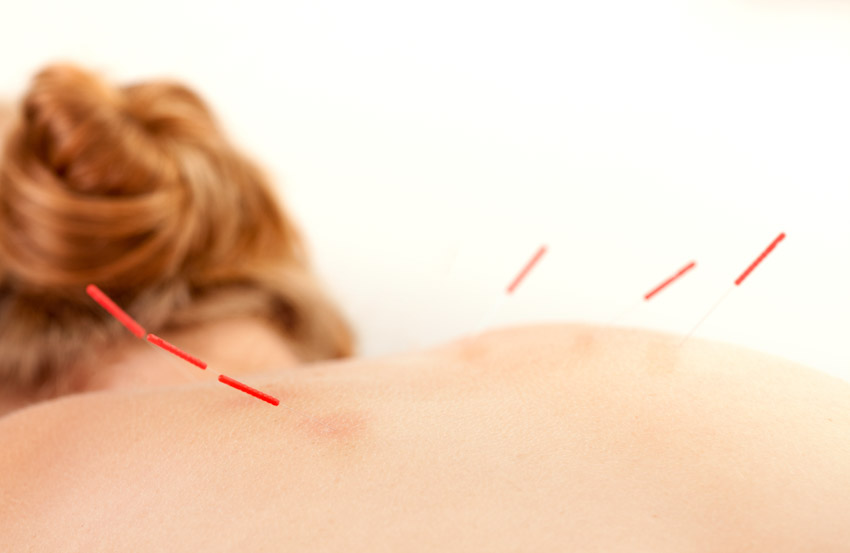
Acupuncture combined with Chinese herbal medicine outperforms two powerful drugs for the alleviation of bronchiectasis related symptoms. Henan Jiyuan Municipal Hospital of Traditional Chinese Medicine researchers compared acupuncture plus herbs with a pharmaceutical medication regimen of care. Acupuncture plus herbs treatment achieved a total effective rate of 96.67% and drugs achieved a 70.00% total effective rate. Patients in the drug control group received ciprofloxacin and ambroxol. The researchers conclude that acupuncture outperforms the selected pharmaceutical medications for the treatment of bronchiectasis. [1]
Patient management of bronchiectasis is often difficult. This is a condition wherein bronchial tubes are permanently damaged with unhealthy morphology such as thickening or widening. Monitoring this condition helps to circumvent secondary issues caused by this condition, including problems with oxygen levels and recurrent infections. The researchers compared Chinese medicine treatment with a powerful antibiotic (ciprofloxacin) and ambroxol (a mucolytic agent, which thins sputum and reduces viscosity so that coughing is more productive). The results indicate that acupuncture and herbal medicine are safe and effective as chronic management tools for patients with bronchiectasis.
The study involved 60 patients with bronchiectasis that received Chinese medicine or drug treatments. Patients were randomly assigned to a drug control group and an acupuncture plus herbs treatment group, with 30 patients in each group. The treatment group was comprised of 17 males and 13 females, with an average age of 59.62 years, and a bronchiectasis medical history of 11.73 years. The drug control group had 14 males and 16 females, with an average age of 60.03 years, and a bronchiectasis medical history of 12.57 years.
Patients from both groups were comparable as there were no significant differences in terms of their gender, age, medical histories, and other relevant demographics. Pregnant women, breast feeding mothers, and patients with liver or kidney dysfunction or mental disorders were not included in the study. The following inclusion criteria were used:
- Bronchiectasis with recurrent episodes and long course of disease
- Manifested by cough, sputum, and hemoptysis
- Confirmed by chest radiography, bronchography, or CT
- Meeting the TCM (Traditional Chinese Medicine) Diagnosis and Curative Effect Criteria for Bronchiectasis.
Patients from the treatment group received acupuncture at the following primary acupoints, using either the ventral or dorsal acupoints:
- BL14 (Jueyinshu)
- BL12 (Fengmen)
- BL13 (Feishu)
- CV17 (Danzhong)
- CV18 (Yutang)
- CV20 (Huagai)
Additional secondary acupoints were added based on symptom presentation. For excess phlegm-dampness, the following acupoints were added:
- ST40 (Fenglong)
- SP9 (Yinlingquan)
- SP4 (Gongsun)
For excess phlegm-heat, the following acupoints were added:
- LI4 (Hegu)
- LU10 (Yuji)
For kidney and spleen deficiency, the following acupoints were added:
- ST36 (Zusanli)
- BL20 (Pishu)
- BL23 (Shenshu)
Average needle insertion was oblique or transverse to a depth of 1 cun, where indicated by standard needling protocols. After deqi was elicited, needles were manipulated with the attenuating technique. A 20-minute needle retention time was observed. One acupuncture session was conducted daily for a total of 2 months. The formula used in the study was a modified version of Bu Zhong Yi Qi (Tonify the Middle and Augment the Qi) decoction and was comprised of the following herbs:
- Huang Qi 40 g
- Ren Shen 15 g
- Bai Zhu 10 g
- Zhi Gan Cao 15 g
- Dang Gui 10 g
- Chen Pi 6 g
- Sheng Ma 6 g
- Chai Hu 12 g
- Sheng Jiang 9 pieces
- Da Zao 6 pieces
Additional herbs were prescribed according to individual symptoms. For excess phlegm-heat, the following herbs were added in appropriate quantities per the diagnostic presentation:
- Huang Qin
- Pu Gong Ying
For excess phlegm-dampness, the following herbs were added in proper quantities:
- Jin Qiao Mai Gen
- Ban Xia
For sputum with blood, the following herbs were added in proper quantities:
- Bai Mao Gen
- San Qi
- Ou Jie
Each batch was boiled in water and then simmered to yield a 200 ml decoction. Three decoctions were given to the patients daily. For the drug control group patients, 0.75 g ciprofloxacin was given to the patient daily, three times per day, and 1.2 g ambroxol (with 150 ml 0.9% sodium chloride) was administered daily through an intravenous drip. The drug treatment lasted for a total of 2 consecutive months.
Patients were evaluated before and after the treatments. First, the ventilation function was measured using the percentage of forced expiratory volume in one second (FEV1%) and peak expiratory flow (PEF). Second, the activities of daily living (ADLs) were calculated. Third, the total treatment effective rate for each patient group (treatment and control) was derived as the percentage of patients that achieved at least an effective treatment tier of improvement. The treatment efficacy for each patient was categorized into 1 of 4 tiers:
- Clinically controlled: complete absence of symptoms. FEV1% improvement >40%. PEF variability rate <15%.
- Significantly effective: significant improvement of symptoms. FEV1% improvement >20% but <39%.
- Effective: symptoms showed improvement. FEV1% improvement >10% but <19%.
- Not effective: symptoms showed no improvement
The study confirms that herbs and acupuncture outperform the drug protocol selected for the investigation. This is a clinically significant finding for important reasons. First, the acupuncture and herb treatments did not produce any serious adverse effects. In addition, the total effective rate was higher in the acupuncture and herbs group than in the drug control group. The results demonstrate that acupuncture is an important treatment option for patients with bronchiectasis.
Reference:
[1] Fan HJ. Effects of Bu Zhong Yi Qi Decoction Combined with Acupuncture on Lung Ventilation Function and Daily Living Ability in Patients with Steady-state Bronchiectasis [J]. Journal of North Pharmacy, 2019,04:136-137.


